
by Dony K. Donev, D.Min.
Historical and Doctrinal Formation of Holiness Teachings and Praxis among Bulgarian Pentecostals (Research presentation prepared for the Society of Pentecostal Studies, Seattle, 2013 – Lakeland, 2015, thesis in partial fulfillment of the degree of D. Phil., Trinity College)
Pentecostal identity was corporately practiced and celebrated within the fellowship of believers through the partaking of Holy Communion. We have otherwise extensively described the Communion service among Bulgaria’s conservatives in Theology of the Persecuted Church (Part 1: Lord’s Supper https://cupandcross.com/theology-of-the-persecuted-church/). Therefore, here we offer just a brief overview of its main characteristics.
- It was done in a time and place directed by the Holy Spirit
- If some did not have water baptism they were taken to a close by river to be baptized while the rest of the church prayed
- Upon returning, if some did not have yet the baptism with the Holy Spirit, the church would pray until all were baptized
- It began with each participant audibly asking all members for forgiveness
- they would also audible respond with the words: WE FORGIVE YOU and may GOD also forgive you
- The communion bread was prepared on the spot baked by women whose names were also reveled in prayer
- All drank from one cup, which strangely for their strict practice of abstinence from alcohol, was filled with alcoholic wine
- Communion was served only to those who had the fullness of the Spirit, and had just requested and were given forgiveness
- The presbyter would quote Jude 20 to each partaking believer thus directing them to audibly speak in tongues before they could participate in communion
- Interpretation often followed to confirm the spiritual stand of the believer
- If there were any leftovers, the Communion elements were served again until all was used
- Communion was incomplete without foot washing as a seal that the whole sacrament was fulfilled.
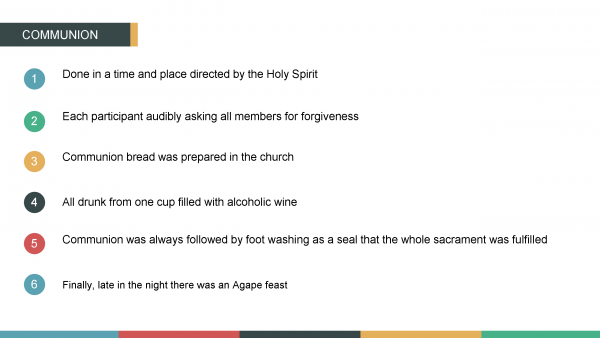
Tags: 365, Bulgarian, communion, corporate, Featured, holiness, news, pentecostals, practice, Research, service, the, within
1896 Shearer Schoolhouse Revival

Location: Camp Creek, North Carolina
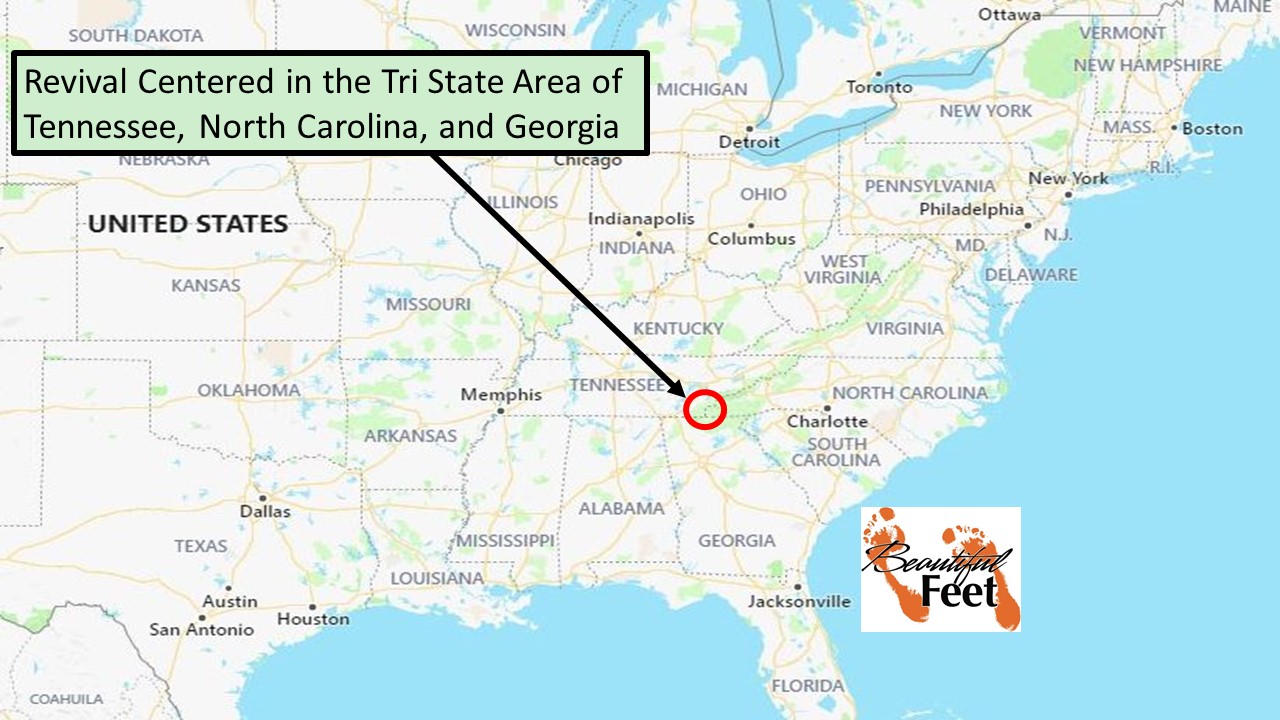
Introduction
Before the 1901 Topeka Outpouring, and before the 1906 Azusa Street Revival, there was the 1896 Shearer Schoolhouse Revival.
Several of the largest Pentecostal denominations trace their roots back to an event that took place at the Shearer Schoolhouse located in Camp Creek, North Carolina.
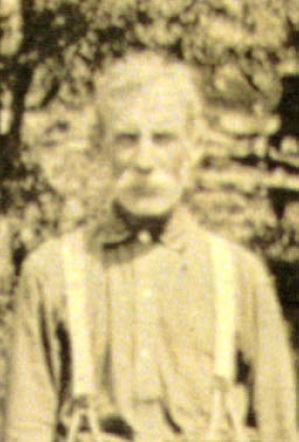
Richard G. Spurling Sr. (1810-1891)
The chain of events that led up to that momentous occasion began in 1884 when 72-year-old Richard G. Spurling (1810-1891), a Baptist preacher, and a few of his friends had grown weary with the spiritual condition in the mountains. They spent several years trying to bring renewal and reform within the churches, but all their efforts failed.
Together with his 27-year-old son, who was also a licensed Baptist preacher (R.G. Spurling Jr., 1857-1935), Spurling called for a gathering to be held on Thursday, August 19, 1886, to see if there was sufficient interest to start a new church.
Gathered that August day were those from Baptist, Methodist, and Presbyterian churches. They assembled in the Spurling family’s grist mill on the banks of Barney Creek, Tennessee. (Some have referred to that grist mill as the “Barney Creek Meetinghouse.”)
During the meeting, Richard G. Spurling Sr. asked those assembled:
As many Christians as are here present that are desirous to be free from all man-made creeds and traditions, and are willing to take the New Testament, or law of Christ, for your only rule of faith and practice; giving each other equal rights and privilege to read and interpret for yourselves as your conscience may dictate, and are willing to sit together as the Church of God to transact business as the same, come forward.

Location of the revival’s beginning in relation to other major cities in the area.

Painting of what the Spurling grist mill on Barney Creek could have looked like. This mill has also been called the Barney Creek Meetinghouse.
Eight out of the group came forward, and with those few they began the church that was named “Christian Union.”
On September 2, 1886, R.G. Spurling Jr., was installed as the pastor of this new church. A few years later, at age 74, the elder Spurling died, never having had the opportunity to see the budding of the great movement he launched.
R.G. Spurling Jr. preached across the mountains for the next ten years, starting churches in different locations, the last one being in Turtletown, Tennessee, only four miles from the Camp Creek church which Bryant had recently started. It was in Camp Creek that God brought an extraordinary revival of holiness to the mountains.
In 1892, William F. Bryant, a Baptist lay preacher licensed through Liberty Baptist Church, began prayer meetings in his home in Camp Creek, North Carolina. His home was located about 12 miles from the Christian Union congregation in Barney Creek. Bryant and Spurling ultimately became good friends and developed a strong working relationship.
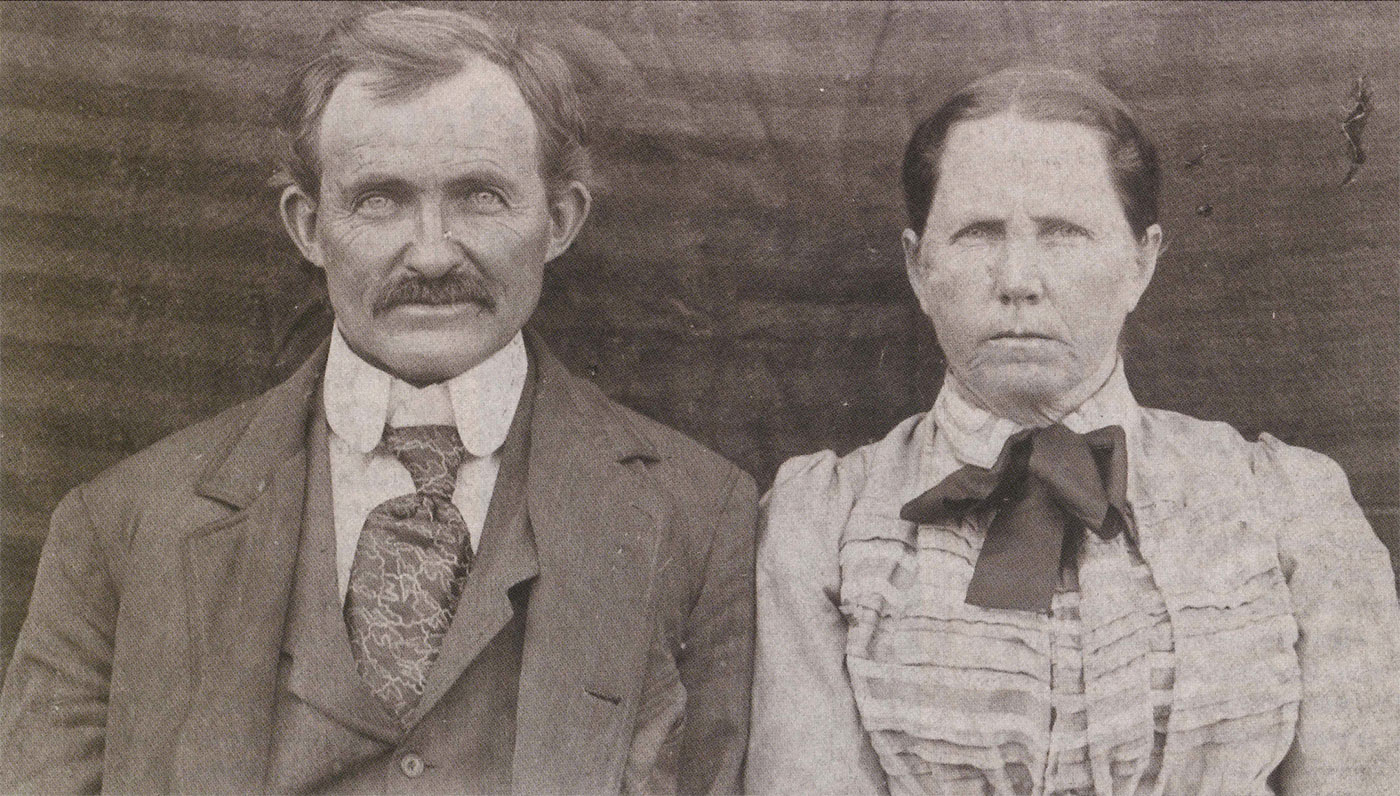
R.G. Spurling Jr. and wife Barbara (earlier picture)
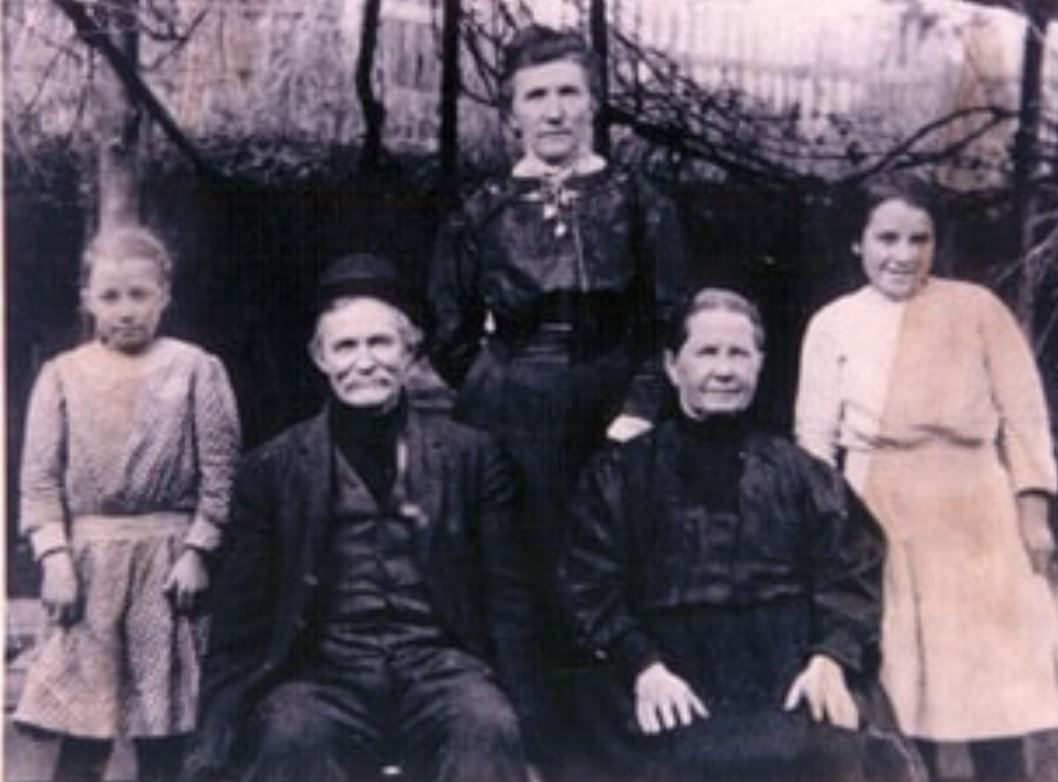
Spurling Family
Extraordinary Prayer & Preparation for Revival
Through W.F. Bryant’s relationship with Spurling, Bryant started a church and Sunday School in Camp Creek, under the Christian Union umbrella. Spurling led his congregation in Turtletown, Tennessee, to merge with Bryant’s congregation, which was located 4 miles away across the state border. This new unity and freedom led the people in the mountains to give themselves fully to prayer and fasting, anticipating God to save many souls.
This highly focused prayer led to a ten-day revival that was conducted in the summer of 1896 by four lay evangelists. These revival services were held in the Shearer Schoolhouse in Camp Creek, North Carolina. People came to this revival from many parts of the mountains.
Almost from the start of the meeting, the altars were filled with repentant sinners and seekers for the experience of sanctification. Many skeptics of holiness were convinced, and many more rough-living sinners were converted. —Charles W. Conn
When the scheduled revival services concluded, the “spirit of revival” continued, and people often met in homes, under brush arbors, or in the Shearer Schoolhouse, as they didn’t yet have a building in which to worship.

Prominent locations involved with the revival. The major city of Chattanooga is given for reference.
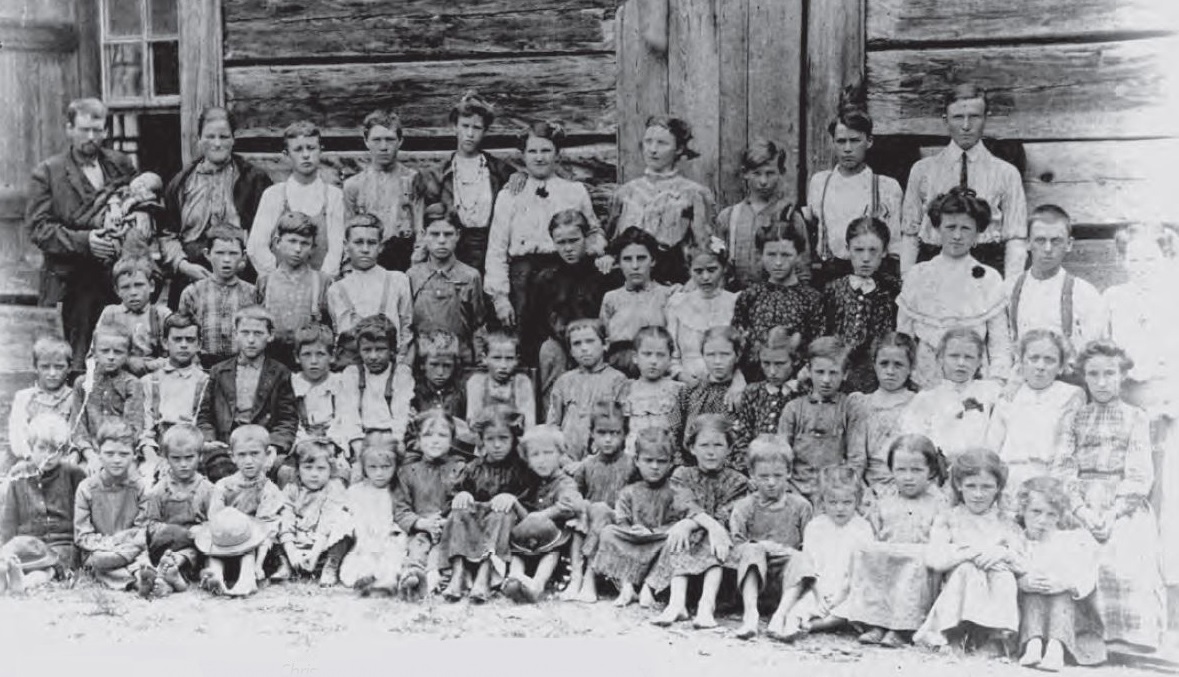
R.G. Spurling Jr. founded this second Christian Union Church at Piney Grove in Monroe County, Tennessee, in 1897.
What Happened
All of the heightened focus on God to move in the mountains continued to inspire and move the people to believe for even greater things from God.
And the interest increased until unexpectedly, like a cloud from a clear sky, the Holy Ghost began to fall on the honest, humble, sincere seekers after God. . . . One after another fell under the power of God, and soon quite a number were speaking in other tongues as the Spirit gave them utterance.”
News of this Holy Spirit outpouring spread to adjoining counties and the people came to witness the phenomenon of Spirit-filled believers speaking in an unknown language. Many sick persons were healed and “hundreds of hard sinners were converted.”
It was a Pentecostal awakening, a recurrence of what happened on the Day of Pentecost. Even though this was a very sparsely populated area in the mountains, “more than 100 persons received the baptism with the Holy Ghost and spoke in tongues.” This was an important event that prepared the way for the universal outpouring that followed ten years later during the 1906 Azusa Street Revival.
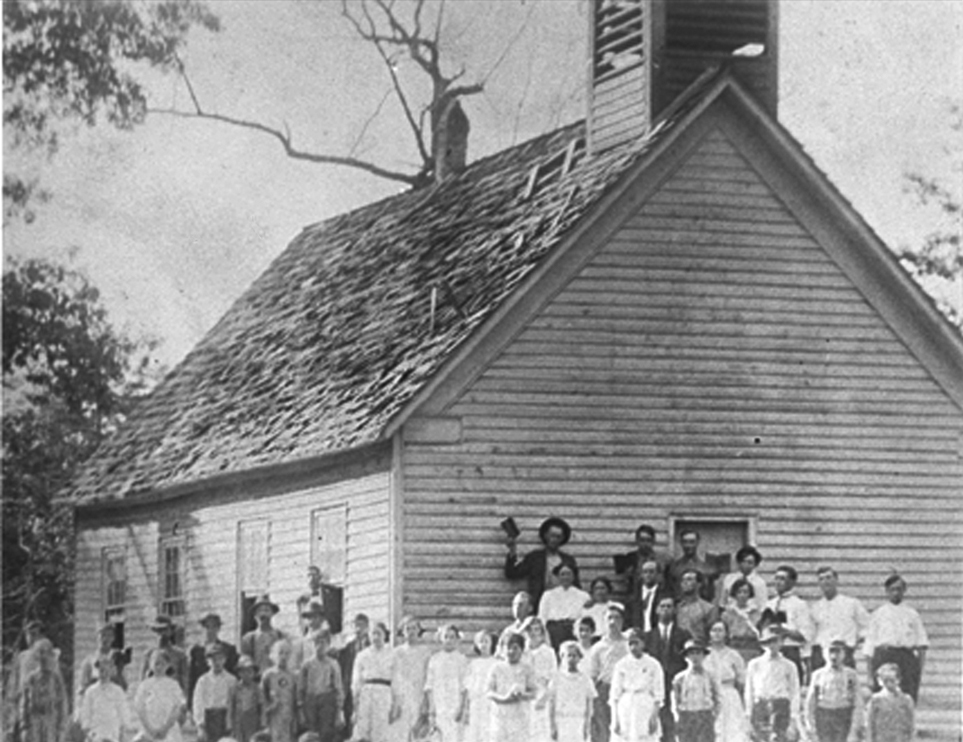
The Shearer Schoolhouse in Camp Creek, North Carolina, location of the 1896 holiness revival.

Wording on the Shearer Schoolhouse Monument

Shearer Schoolhouse Monument
Persecution
Beginning in 1899, the Liberty Baptist and Pleasant Hill Baptist churches excommunicated forty of their members for their participation with the Christian Union congregations (house churches) in the area, the reasons being the style of worship and doctrinal differences (R.G. Spurling Jr. was licensed to preach through Pleasant Hill Baptist, and William F. Bryant through Liberty Baptist Church. Both were excommunicated.)
A subsequent act of the Baptist churches was to prevent the Christian Union congregation from using the Shearer Schoolhouse for services. It was then that Dickson Kilpatrick donated land across the road from the schoolhouse on which a log meetinghouse could be constructed. The persecutors responded by first attempting to destroy the building with fire and dynamite–both attempts failed. It was then that 106 leading members of the community dismantled the log meeting house and burned the logs. This mob included ministers and deacons from neighboring churches, one justice of the peace, and one sheriff.
When arrests were finally made for the destruction of the property, and guilty parties were put on trial, Bryant and the Christian Union congregation simply asked the court to forgive them.
Other Types of Persecution Endured
1. Homes where meetings were held were burned.
2. People were whipped.
3. Homes were shot at.
4. Stones were thrown at buildings.
5. Water sources were contaminated.
6. Children were harshly treated by teachers at school, as well as beaten by other children. This required parents to take their children out of school.
These early Pentecostal pioneers suffered for about six years from this type of persecution, yet they had found a new freedom, power, and purpose for their life in this new Pentecostal experience which could not and would not be extinguished by their persecutors.
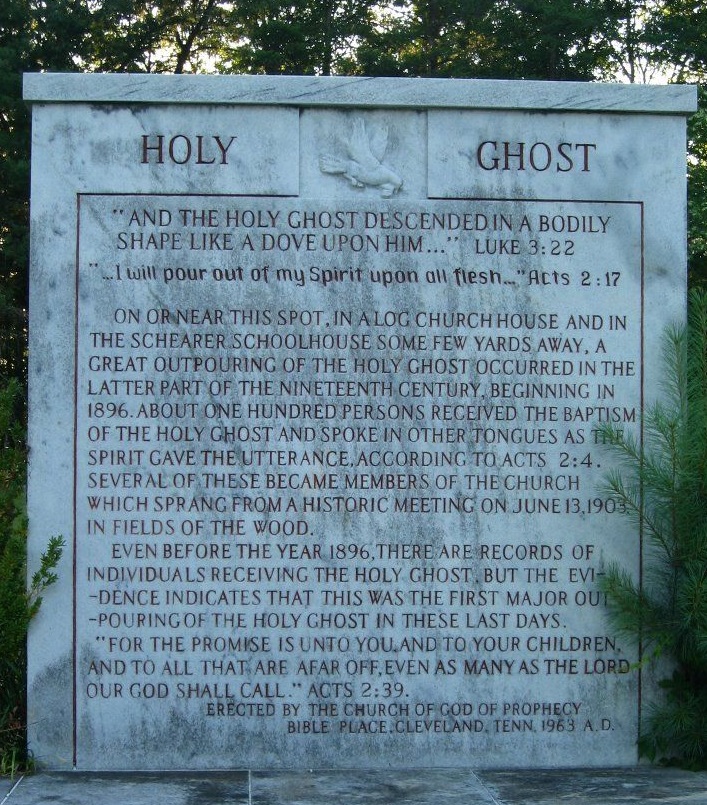
Monument today where the log church once stood
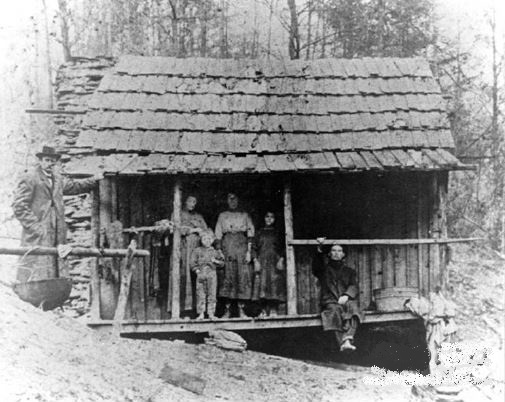
Home of William F. Bryant
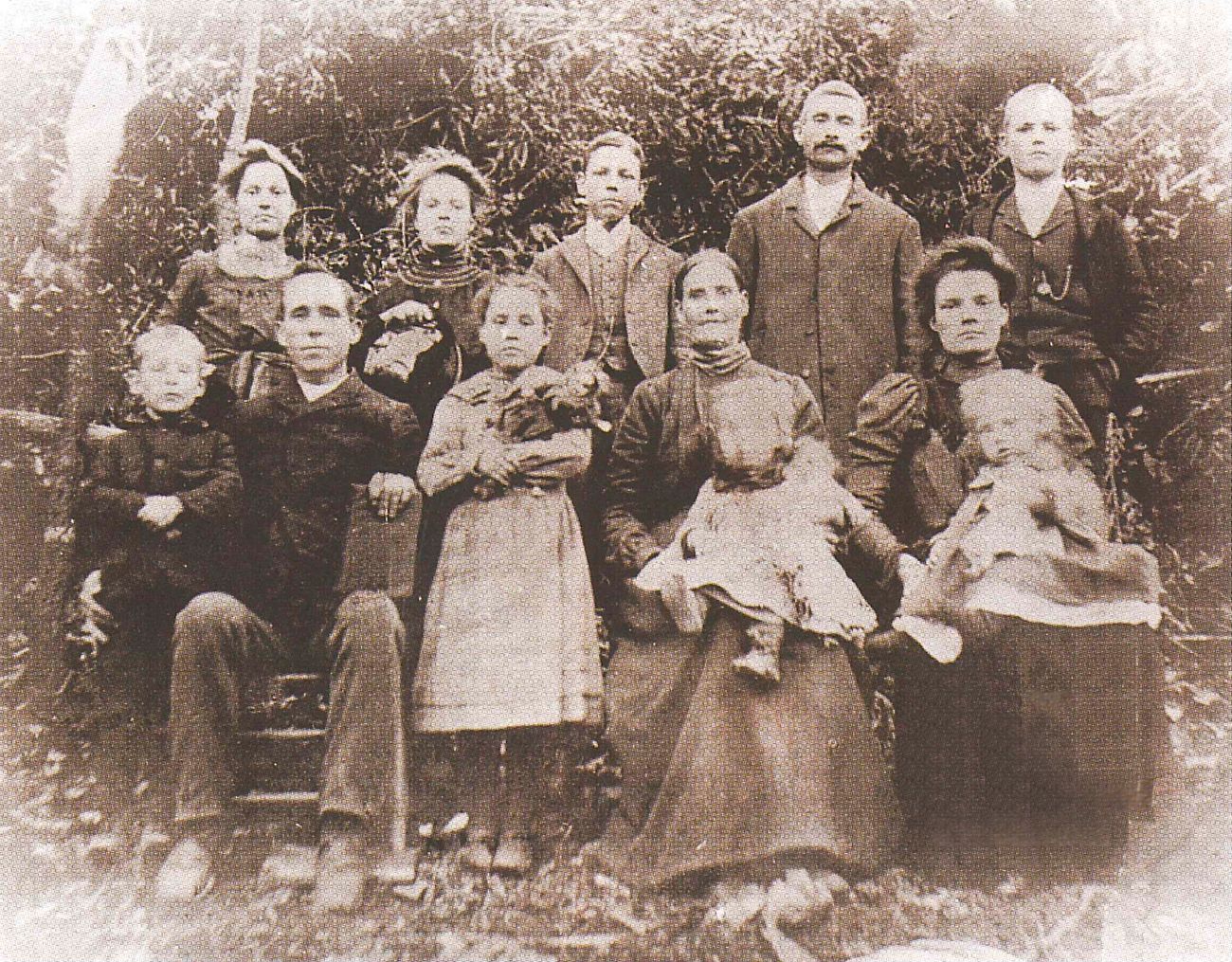
William F. Bryant (seated left) and family
Governmental Order (fanaticism & false teachings)
Without any form of government in the Christian Union congregations, false teachings began to emerge, as well as fanaticism. This led Bryant and Spurling to develop a form of government, in conjunction with establishing doctrines, that would unite the believers and at the same time ward off the false teachings.
The restructuring of the Christian Union took place on May 15,1902, in the home of Bryant. This restructuring led to a name change for the churches from “Christian Union” to the “Holiness Church at Camp Creek.”
Following the reorganization, new preachers, deacons, and church members began to be added to the churches. One notable pastor that joined the Holiness Church on June 13, 1903, was the Quaker from Westfield, Indiana, A.J. Tomlinson.
A.J. Tomlinson
Tomlinson had come to the mountains in 1899 to serve as a missionary. He had established a school, an orphanage, and a clothing distribution center to care for and evangelize the poor.
Tomlinson had become acquainted with the Holiness Church in Camp Creek, and on the morning of June 13, 1903, following his morning prayer on the mountain behind Bryant’s home, Tomlinson became convinced that the holiness congregation was “the Church of God of the Bible.” The leadership of the Holiness Church had confidence in Tomlinson and immediately selected him as pastor for the church in Camp Creek.
Tomlinson’s vision to spread the gospel around the world soon led to the establishment of other Holiness Church congregations, the first General Assembly in 1906, and a change of name from the “Holiness Church” to “Church of God” in 1907. What began as a trickling mountain stream at Barney Creek became a surging river of global ministry.

W.F. Bryant and R.G. Spurling Jr., at the home of J.C. and Melissa (Shearer) Murphy, which was the site of the Church of God’s first General Assembly, conducted on January 26-27, 1906, at Camp Creek, North Carolina
Today the Shearer-Murphy House is maintained by the Church of God of Prophecy as a historical landmark. The home is located on River Hill Road not far from Fields of the Wood.

Historical marker sign at the intersection of River Hill Road and North Carolina Route 294
Results of the Revival
Not less than nine denominations emerged from the Shearer Schoolhouse Revival. At least five of those are headquartered in Cleveland, Tennessee. We list two prominent ones here.
Church of God (Cleveland, Tennessee)
In December of 1904 the Holiness Church of Camp Creek had its center of activity moved from Camp Creek, North Carolina, to Cleveland, Tennessee. That was when A.J. Tomlinson moved his family there to start the North Cleveland Church of God. That church eventually became the “mother church” for the budding denomination. Cleveland is now where the headquarters for the Church of God is located, and home to Lee University.
On January 11, 1907, the Holiness Church of Camp Creek changed its name to Church of God, and has kept that name since.
In 2018, the total worldwide membership of the Church of God was 7,468,083. Of that total, 1,189,304 members were in the United States and Canada, making the Church of God the 22nd largest Christian denomination in the United States.
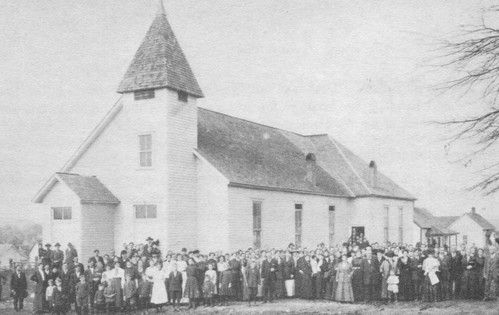
North Cleveland Church of God, circa 1906

The US plans to deepen its cooperation with Bulgaria, Moldova, Georgia, Ukraine and Romania. This is clear from the “Black Sea Security Act” introduced in the US Congress.
The document states that the priority will be activities such as intelligence and monitoring of Russian operations in the Black Sea region, the creation of an international headquarters to be responsible for the planning, preparation, implementation and coordination of multinational military forces. Fighting Russian disinformation with the support of the United States is also part of the priorities.
The document recognizes the Black Sea region as an arena of Russian aggression and declares that it is in the interest of the United States to support efforts to prevent the spread of further armed conflict in Europe.
The US ambassador to Bulgaria, Kenneth Merten, recently recalled the document, saying that the document will focus the issues of the region, because there are serious problems in certain parts of the Black Sea.
The second 10 days of the extended Russian military exercise in the economic zone of Bulgaria are currently underway.
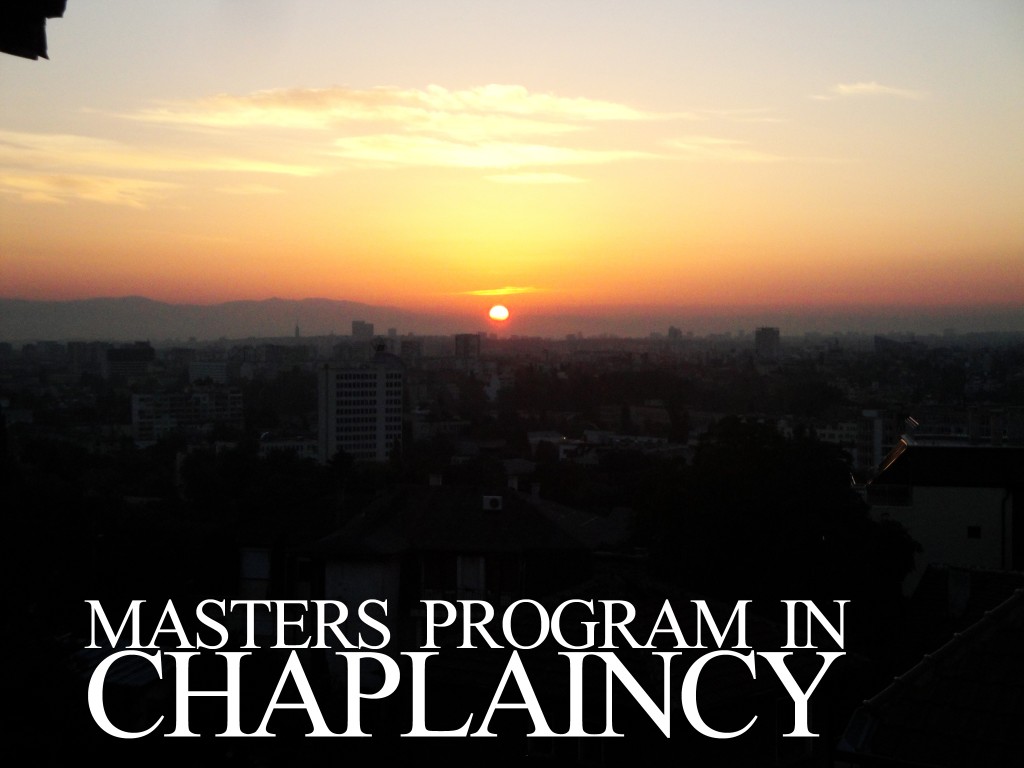
July 30, 2023
As the country of Bulgaria is now a member of NATO and awaits acceptance into the European Union in 2007, international experts are working with various government institutions and consultant agencies to create an atmosphere in which the Bulgarian mindset can experience a new national revival in the 21st century….
We began our literal journey of ministry on the high seas in 2009. After exploring the opportunity for several years’ prior and submitting applications to various chaplaincy organizations which dealt with such ministry, the doors finally opened for Cup and Cross. This search for a ministerial identity and its proper…
Master’s of Chaplaincy Ministry Program in Bulgaria Renewed (2010-2023) We are proud to announce that the Master’s of Chaplaincy Ministry Program, we designed and launched in Bulgaria in 2006, has been selected to be part of the Social Service Program of New Bulgarian University. After being for years a valuable…
Reflection on on U.S. Department of State recognizing the Bulgarian Chaplaincy Associations BREAKING NEWS [October 8, 2007] Original source archive: U.S. Department of State: https://web.archive.org/web/20080709061910/http://www.state.gov/g/drl/rls/irf/2007/90168.htm For immediate release: Bulgarian Chaplaincy Associations Recognized by U.S. Department of State U.S. Department of State has released its annual International Religious Freedom Report for 2007….
Our Bulgarian Chaplaincy Association celebrates 26 years of Military Ministry in Bulgaria since the first event co-hosted by the Bulgarian Armed Forces and government officials in 1997. 2018 The Road toward a Balkan Multi-Ministry Center and Legal Status 2017 Bulgarian Chaplaincy Association: Legal Case Renewed 2015 Revisiting the Integration Proposal with Local NATO Programs by Bulgarian…
Current Context of Chaplaincy in Bulgaria (2003-2023)
We are proud to announce that the Master’s of Chaplaincy Ministry Program, we designed and launched in Bulgaria in 2006, has been selected to be part of the Social Service Program of New Bulgarian University. After being for years a valuable part of the regular curriculum of the Bulgarian Evangelical Theological Institute and the St. Trivelius Institute in the capital Sofia, the chaplaincy program has received the highest level of recognition as successful graduates will be finally able to receive government recognized degrees and apply their knowledge and training in chaplaincy on a professional level. The chaplaincy program can also serve within the Integration Proposal of local NATO programs and be instrumental in dealing with the enormous wave of Middle East migrants crossing through Bulgaria today.
The fall of the Berlin Wall introduced a new reality that Bulgaria was not prepared to embrace. The end of Communism was unable to tear down the communist mentality. Today, an entire Bulgarian generation lives with the scars inflicted by their experience under years of the Communist Regime, while another generation lives with an immense historical gap that has formed a new political, social, economical and cultural reality.
Three points are worth noting about Bulgaria’s Postcommunist context. First, in the beginning of the 21st century Bulgaria is left with armed forces, which were organized and influenced by the Soviet model and still act accordingly. The bureaucratic infrastructure disallows and discourages any changes apart from carefully chosen decisions that keep the army’s activities to the minimum possible. The two main factors needed for any change to occur, namely decision-making processes and chain of command, still operate under an Eastern Soviet paradigm.
Second, atheistic morale has gained the status of a positive military qualification in the Bulgarian military. This may sound familiar for any given army; however, in most cases it replaces a religious attitude with an atheistic one. In the Postcommunist context, atheistic beliefs pervade and even when a soldier experiences a genuine need for spirituality, in most cases s/he has no religious root to which to return. This lack of alternative or spiritual choice results in a pessimistic morale, intensified by the required mandatory military services.
Third, a Postcommunist mentality with definite Balkan characteristics rules not only the army but also the country as a whole. The economical, political and cultural crises have remained an undividable part of Bulgaria’s reality in the past 16 years. There, Postcommunist mentality holds captive every progressive thought and idea.
Chronology of Events:
2018 The Road toward a Balkan Multi-Ministry Center and Legal Status
2017 Bulgarian Chaplaincy Association: Legal Case Renewed
2015 Revisting the Integration Proposal with Local NATO Programs by Bulgarian Chaplaincy Association
2014 Bulgarian Chaplaincy Association: Vision and Resolution Reaffirmed
2012 First Class of the Master’s of Chaplaincy Ministry Program
2011 Master’s of Chaplaincy Ministry Program Continues
2010 Master’s of Chaplaincy Ministry Program begins in Sofia, Bulgaria
2009 Bulgarian Chaplaincy Association holds an introductory chaplaincy course in Yambol, Bulgaria
2008 The Case of a NATO Chaplaincy Model within the Bulgarian Army released
2007 Bulgarian Chaplaincy Associations Recognized by U.S. Department of State
2006 Registration for the Bulgarian Chaplaincy Association Rejected by Bulgarian Court
2005 The Bulgarian Chaplaincy Association presented before the Bulgarian Evangelical Alliance
2004 Three U.S. Bases in Bulgaria to be Built by 2010
2003 The Case of a NATO Chaplaincy Model within the Bulgarian Army
2002 First Balkan Chaplaincy Conference at the Central Church of God in Sofia, Bulgaria
2001 Church of God Chaplaincy Commission to visit Bulgaria
2000 Euro-seminar: Christian ethics in the military forces
1997 First Military Ministry Seminar in Veliko Tarnovo
As the country of Bulgaria is now a member of NATO and awaits acceptance into the European Union in 2007, international experts are working with various government institutions and consultant agencies to create an atmosphere in which the Bulgarian mindset can experience a new national revival in the 21st century. NATO’s involvement in this process serves as a catalyst both for reinforcing Bulgaria’s infrastructure and attracting international interest in the country’s affairs. Issues concerning national security, military involvement, international relations, economical development and ethnic diversity are continuously and carefully taken into consideration. However, one issue still remains untouched neither by NATO’s official position in Bulgaria, nor by the Bulgarian government. This is the issue of faith.
Three reasons make such topic of relevant importance. First, Bulgaria claims traditional and historical religious belongingness to the Eastern Orthodox Church. Furthermore, the centuries of religious wars on the Balkans have formed a complete dependency on ethnic religiosity, making faith the prime factor for animosity, hatred and genocide. Finally, the issue of morale and morality in the armed forces remains open for any military unit and will need to be addressed sooner or later in the context of NATO’s presence in Bulgaria.
This research will show how the above issues could be resolved by the presence of a NATO paradigm for chaplaincy within the Bulgarian Armed Forces. The paper will explore the current developments of chaplaincy in Bulgaria on three levels: church, society and government. It will then present the case of “underground chaplaincy” in Bulgaria and provide an appropriate solution to be implemented through the newly established Bulgarian Chaplaincy Association. The conclusion will outline the benefits that can be achieved by a partnership between local NATO representatives and the Bulgarian Chaplaincy Association who combine efforts to restore the spirituality within the Bulgarian Army through the legalization of chaplaincy ministry within its structures.
Bulgarian Chaplaincy Association and Master of Chaplaincy Program Ministry 2023 Priority Review
In the midst of the 2020 pandemic, the Bulgarian Chaplaincy Association was able to continue in active field ministry as well as its Master of Chaplaincy Program in affiliation with New Bulgarian University. Another doctoral graduate from the chaplain’s program graduated in 2020 with special focus of ministry in the Eastern part of Bulgaria. The Association has not completed its task yet, namely, legalizing chaplaincy within the Bulgarian armed forces, but major milestones have been accomplished. Our 2006 proposal submitted to NATO’s Manfred Wörner Foundation is being implemented as foundational to the doctrine and direction of the Association, being now used by other fields and states as well.
As prisoners in Bulgaria were not generally released during the Pandemic, prison chaplaincy continued through the Sofia region office led by one of our students from the Masters’ Program.
Hospital chaplaincy has remained a challenge as many hospitals, especially in mid-Bulgaria, struggled to provide adequate healthcare during the pandemic crises.
International chaplaincy among Bulgarian migrants have continued as allowed by shutdown orders in various countries in the European Union. On several occasions large communities of migrant workers were forced by the economic challenges to return to Bulgaria, which has presented additional opportunities for chaplaincy ministry.
Institutional chaplaincy has been the weakest point as in the past decade, as interweaving religion and business in the Bulgarian context of ministry has remained a strong test for the endurance of chaplaincy. However, the corporate ecosystem in Bulgaria is progressively changing as foreign investors are continuing to establish regional offices and labor opportunities in the country.
Haskovo, Harmanli and the Strandja region toward the Turkish border south of Yambol have been a focal point of chaplaincy among foreign migrants residing in Bulgaria. We have already established relationship with para-church organizations that work successfully among Muslim migrants in the Scandinavian countries. Their experience and training within the Bulgarian context of ministry has been indispensable.
Finally, social involvement through community chaplaincy has been developing well in the past several years, especially in major project areas like the second largest Bulgarian city of Plovdiv, the region of South Bulgaria, along the Black Sea especially in Bulgaria’s largest sea port at Varna, and along the Danube River including the port cities of Silistra, Rousse, Svishtov and all the way to Vidin.
Also important [click to read]:
Tags: 365, army, Bulgarian, chaplaincy, events, Featured, foundation, manfred, Missions, model, news, publication, submitted, the, within, wörner
We began our literal journey of ministry on the high seas in 2009. After exploring the opportunity for several years’ prior and submitting applications to various chaplaincy organizations which dealt with such ministry, the doors finally opened for Cup and Cross.
This search for a ministerial identity and its proper application in the real world coincided with the start of the Master’s in Chaplaincy Ministry Program which we designed for the Bulgarian Evangelical Theological Institute in Sofia around 2008-2009. The long standing relationships with professors, active military chaplains from various fields and countries, and the wisdom of several Generals in the field helped us calibrate our ministry focus with what is needed by real people in the real world.
The new fad “to be real” is not enough in a realistic ministry setting. When 25ft. high storm waves beat the aft and the ship is thrown towards the dark wall of ocean waters ahead, one cannot help but “to be real” and depend on a very real and skilled crew. A captain alone cannot run the boat through a storm even if all systems are reported working. It is the crew deep down in the engine room and making its way on the slippery deck that makes it all happen.
The Crew. Some of them have not seen their families for months or even a year at times. They struggle with the same fears and anxieties as the rest of us. Except, while the rest of us can hold on to something for dear life, the crew is obligated by duty to continue to serve and move the boat ahead. The little chapel on the top deck becomes a passage to a lagoon past the riffs of stormy life where stories are shared, prayers are lifted up together and human lives are reclaimed anew for Heaven.
We have found these nontraditional paths of travel and ministry yielding the most unique encounters and connections for Kingdom growth. Our family is thankful for these 10 years and looking forward to even more means of ministry outside of the four church walls. If you would like for us to come to your church as share our journey feel free to reach out to us.
Also important [click to read]:
More Publications on the Topic and History of Events:
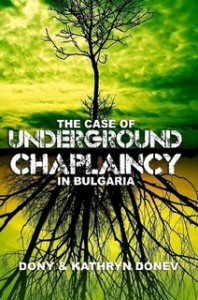 Master’s of Chaplaincy Ministry Program in Bulgaria Renewed (2010-2023)
Master’s of Chaplaincy Ministry Program in Bulgaria Renewed (2010-2023)
We are proud to announce that the Master’s of Chaplaincy Ministry Program, we designed and launched in Bulgaria in 2006, has been selected to be part of the Social Service Program of New Bulgarian University. After being for years a valuable part of the regular curriculum of the Bulgarian Evangelical Theological Institute and the St. Trivelius Institute in the capital Sofia, the chaplaincy program has received the highest level of recognition as successful graduates will be finally able to receive government recognized degrees and apply their knowledge and training in chaplaincy on a professional level. The chaplaincy program can also serve within the Integration Proposal of local NATO programs and be instrumental in dealing with the enormous wave of Middle East migrants crossing through Bulgaria today.
Although the Bulgarian Chaplaincy Association emerges from and ministers within the Bulgarian cultural context, it is designed for integral cooperation with organizations of various origins. This advantage comes from the experience of previous working relationships that the organizations represented within the Association have had with other non-Bulgarian organizations. The vision, structure and operation of the Association incorporate and comply with western styles of chaplaincy work on three levels (1) cultural, (2) educational and (3) governmental.
The cultural heritage of the Bulgarian Chaplaincy Association represents a valuable environment for integration of NATO forces within the local cultural setting. On a cultural level, various events and activities such as English speaking church services, fellowship of soldiers with local communities, hospitals, orphanages and other cultural experiences are available. Humanitarian aid projects are among the most efficient manner for integration within the local community.
On an educational level, there are possibilities on both sides. For example, Bulgarian language courses for the soldiers and English language courses for the local community could be implemented. The most important element within the education strategy perhaps may be education of chaplaincy workers, especially in the current context when Bulgaria is in a need of trained crisis counselors for cases of floods and other natural disasters. Finally, local and national government relations will assist in the change of the status of chaplaincy within the Bulgarian Army. Such an approach will have positive political implications, as chaplaincy becomes a mediator between the army, church and government.
The presented proposal integrates religious moral issues along with socio-political principles in the idea for chaplaincy within the Bulgarian Army. The implications of these principles project involvement of local NATO units in partnership with local Bulgarian organizations. In the case of chaplaincy within the Bulgarian Army, the proposed organization is the newly established Bulgarian Chaplaincy Association. Although political, social and economical issues remain in the scope of its work, the Association’s main priority is the renewal of spirituality within the army structure through cutting-edge chaplaincy ministry beyond the ecclesial gates into a world of war and insecurity. The Bulgarian Chaplaincy Association acts as an agent of spiritual restoration targeting morality within the Bulgarian Army with the Bulgarian chaplain as the key element in this process. For an army without spirituality is no army at all.
Chronology of Events:
2018 The Road toward a Balkan Multi-Ministry Center and Legal Status
2017 Bulgarian Chaplaincy Association: Legal Case Renewed
2015 Revisting the Integration Proposal with Local NATO Programs by Bulgarian Chaplaincy Association
2014 Bulgarian Chaplaincy Association: Vision and Resolution Reaffirmed
2012 First Class of the Master’s of Chaplaincy Ministry Program
2011 Master’s of Chaplaincy Ministry Program Continues
2010 Master’s of Chaplaincy Ministry Program begins in Sofia, Bulgaria
2009 Bulgarian Chaplaincy Association holds an introductory chaplaincy course in Yambol, Bulgaria
2008 The Case of a NATO Chaplaincy Model within the Bulgarian Army released
2007 Bulgarian Chaplaincy Associations Recognized by U.S. Department of State
2006 Registration for the Bulgarian Chaplaincy Association Rejected by Bulgarian Court
2005 The Bulgarian Chaplaincy Association presented before the Bulgarian Evangelical Alliance
2004 Three U.S. Bases in Bulgaria to be Built by 2010
2003 The Case of a NATO Chaplaincy Model within the Bulgarian Army
2002 First Balkan Chaplaincy Conference at the Central Church of God in Sofia, Bulgaria
2001 Church of God Chaplaincy Commission to visit Bulgaria
2000 Euro-seminar: Christian ethics in the military forces
1997 First Military Ministry Seminar in Veliko Tarnovo
The fall of the Berlin Wall introduced a new reality that Bulgaria was not prepared to embrace. The end of Communism was unable to tear down the communist mentality. Today, an entire Bulgarian generation lives with the scars inflicted by their experience under years of the Communist Regime, while another generation lives with an immense historical gap that has formed a new political, social, economical and cultural reality.
Three points are worth noting about Bulgaria’s Postcommunist context. First, in the beginning of the 21st century Bulgaria is left with armed forces, which were organized and influenced by the Soviet model and still act accordingly. The bureaucratic infrastructure disallows and discourages any changes apart from carefully chosen decisions that keep the army’s activities to the minimum possible. The two main factors needed for any change to occur, namely decision-making processes and chain of command, still operate under an Eastern Soviet paradigm.
Second, atheistic morale has gained the status of a positive military qualification in the Bulgarian military. This may sound familiar for any given army; however, in most cases it replaces a religious attitude with an atheistic one. In the Postcommunist context, atheistic beliefs pervade and even when a soldier experiences a genuine need for spirituality, in most cases s/he has no religious root to which to return. This lack of alternative or spiritual choice results in a pessimistic morale, intensified by the required mandatory military services.
Third, a Postcommunist mentality with definite Balkan characteristics rules not only the army but also the country as a whole. The economical, political and cultural crises have remained an undividable part of Bulgaria’s reality in the past 16 years. There, Postcommunist mentality holds captive every progressive thought and idea.
It is natural to conclude that the active solider within the Bulgarian Armed Forces is left without much choice when it comes to his/her personal and spiritual development. A positive career development is possible only when pressed by the economical factors one accepts to be part of a highly inactive bureaucratic machine. On the other hand, any attempt for spiritual growth is constrained and receives little privilege to become fully expressed. Naturally, such dynamics decrease one’s motivation for further development due to the lack of morale emerging from a personal spirituality. And because an army without a spirit is no army at all, the current condition of the Bulgarian Army is in much need of revival.
Also important [click to read]:
Tags: Bulgaria, chaplaincy, events, Featured, masters, ministry, Missions, news, program, publication, renewed
Reflection on on U.S. Department of State recognizing the Bulgarian Chaplaincy Associations
 BREAKING NEWS [October 8, 2007]
BREAKING NEWS [October 8, 2007]
Original source archive: U.S. Department of State:
https://web.archive.org/web/20080709061910/http://www.state.gov/g/drl/rls/irf/2007/90168.htm
For immediate release: Bulgarian Chaplaincy Associations Recognized by U.S. Department of State
U.S. Department of State has released its annual International Religious Freedom Report for 2007. In the section about Bulgaria, the work of Cup & Cross Ministries has been noted through the recognition of the Bulgarian Chaplaincy Association.
Cup & Cross Ministries has worked toward the establishment of the Bulgarian chaplaincy Association since the year 2000. After five years of training chaplains, strategic professional placement and providing ministry in all respective areas of chaplaincy, in 2005 we began the process of registration with the Bulgarian government. This process was both difficult and a long test of our endurance. Although we were not openly denied registration under the 2002 Religious Act, various courts throughout Bulgaria hesitated and delayed our legal registration. Our ministry activities were closely watched and members of our staff were called in for interrogation on various occasions. After resorting to international human rights and religious freedom organizations, finally on February 23, 2007 the Bulgarian Chaplaincy Association received registration by the Sofia Municipality Court to become the first legal chaplaincy organization in Bulgaria officially recognized by the Bulgarian government. The current U.S. Department of State report overviews the above process. The direct quote of the report follows:
International Religious Freedom Report 2007
Released on September 14, 2007
http://www.state.gov/g/drl/rls/irf/2007/90168.htm
Section II. Status of Religious Freedom
Improvements and Positive Developments in Respect for Religious Freedom
Some religious denominations reported that the Religious Confessions Directorate had become more active in assuring that national and local authorities respect and promoted religious freedom and that the national government was more receptive to their concerns. For example, a Protestant group, the Bulgarian Chaplaincy Association, gained legal status on February 23, 2007. The association represents approximately 120 Protestant pastors and individuals mainly affiliated with the Church of God and Assemblies of God but also includes Baptists and Lutherans.
Almost three decades ago, we established the Bulgarian Chaplaincy Association with a vision for ministry in the Bulgarian army, Ministry of Internal Affairs, jail and prison systems, Bulgarian seaports and airports, and the healthcare system. Out of these five goals set before us in 2006 we have fulfilled them all:
1. Tolerant and equal representations of all confessions in the chaplaincy ministry
2. The implementation of a contextualized chaplaincy model
3. The integration of chaplaincy education in all Bulgarian theological higher educational institutions
4. And the educational and consultant work on government and church levels
except:
5. The establishment of legal grounds for regular paid chaplaincy service in the Bulgarian army, Ministry of Internal Affairs, jail and prison systems, Bulgarian seaports and airports, and the healthcare system.
After designing and teaching the Masters of Chaplaincy Ministry program in two major evangelical universities in Bulgaria, we now have some of our trained chaplains working in jails, prisons, healthcare, civil emergency services and the corporate/political level. The legal system in Bulgaria, however, is yet to provide the proper measure for restoring chaplaincy in Bulgaria’s armed forces. To this final step fulfillment we pledge out support in 2016.
Bulgarian Chaplaincy Association: Vision and Resolution
Bulgarian Chaplaincy Association
Resolution No. 1
We,
The founding members of the Bulgarian Chaplaincy Association in its first national assembly today August 19, 2006 in hotel Diana Palace, Yambol
In regard of:
1. Bulgaria’s membership in NATO and its upcoming integration in the European Union
2. The transformations within the Bulgarian Army from mandatory toward standard paid service and the participation of Bulgarian contingent in NATO and UN missions
3. Contract agreement for NATO airbases on Bulgarian territory
4. The strategic renewal of chaplaincy ministry in the Bulgarian army
5. And the present need of chaplaincy ministry integrated in the Bulgarian army, Ministry of Internal Affairs, jail and prison systems, Bulgarian seaports and airports, and the healthcare system,
Declare our support toward:
1. The establishment of legal grounds for regular paid chaplaincy service in the Bulgarian army, Ministry of Internal Affairs, jail and prison systems, Bulgarian seaports and airports, and the healthcare system
2. Tolerant and equal representations of all confessions in the chaplaincy ministry
3. The implementation of a contextualized chaplaincy model
4. The integration of chaplaincy education in all Bulgarian theological higher educational institutions
5. And the educational and consultant work on government and church levels.
We, the founding members of the Bulgarian Chaplaincy Association will work toward the renewal, popularization and equal religious representation of chaplaincy ministry in all professional areas.
August 19, 2006
Diana Palace, Yambol
Tags: associations, Bulgarian, chaplaincy, Department, events, Featured, Missions, news, publication, recognizing , reflection, Research, state, the, u.s.
Our Bulgarian Chaplaincy Association celebrates 26 years of Military Ministry in Bulgaria since the first event co-hosted by the Bulgarian Armed Forces and government officials in 1997.
2018 The Road toward a Balkan Multi-Ministry Center and Legal Status
2017 Bulgarian Chaplaincy Association: Legal Case Renewed
2015 Revisting the Integration Proposal with Local NATO Programs by Bulgarian Chaplaincy Association
2014 Bulgarian Chaplaincy Association: Vision and Resolution Reaffirmed
2012 First Class of the Master’s of Chaplaincy Ministry Program
2011 Master’s of Chaplaincy Ministry Program Continues
2010 Master’s of Chaplaincy Ministry Program begins in Sofia, Bulgaria
2009 Bulgarian Chaplaincy Association holds an introductory chaplaincy course in Yambol, Bulgaria
2008 The Case of a NATO Chaplaincy Model within the Bulgarian Army released
2007 Bulgarian Chaplaincy Associations Recognized by U.S. Department of State
2006 Registration for the Bulgarian Chaplaincy Association Rejected by Bulgarian Court
2005 The Bulgarian Chaplaincy Association presented before the Bulgarian Evangelical Alliance
2004 Three U.S. Bases in Bulgaria to be Built by 2010
2003 The Case of a NATO Chaplaincy Model within the Bulgarian Army
2002 First Balkan Chaplaincy Conference at the Central Church of God in Sofia, Bulgaria
2001 Church of God Chaplaincy Commission to visit Bulgaria
2000 Euro-seminar: Christian ethics in the military forces
1997 First Military Ministry Seminar in Veliko Tarnovo
With all this accomplished, in the beginning of the 21st century law and chaplaincy meet on the road to democracy as Bulgaria remains the only country in NATO without military force chaplaincy. But before chaplaincy could be legalized completely and endorsed by the state to its full functionality, several changes must be undergone. Some of them are:
- Legal provision allowing chaplains to work as staff in the army, which guarantees the equal presence of protestant chaplains as well.
- The approval, acceptance and implementation of a NATO based model for chaplaincy within the structures of the Bulgarian Army.
- Periodical and systematic educational strategy toward chaplaincy workers among Bulgarian evangelicals.
- A paradigm for cooperation of Bulgarian chaplains from various ethnic, religious and cultural backgrounds.
- Further research publications to enhance the efficiency of chaplaincy within the Bulgarian national context.
Current Context of Chaplaincy in Bulgaria
We are proud to announce that the Master’s of Chaplaincy Ministry Program, we designed and launched in Bulgaria in 2006, has been selected to be part of the Social Service Program of New Bulgarian University. After being for years a valuable part of the regular curriculum of the Bulgarian Evangelical Theological Institute and the St. Trivelius Institute in the capital Sofia, the chaplaincy program has received the highest level of recognition as successful graduates will be finally able to receive government recognized degrees and apply their knowledge and training in chaplaincy on a professional level. The chaplaincy program can also serve within the Integration Proposal of local NATO programs and be instrumental in dealing with the enormous wave of Middle East migrants crossing through Bulgaria today.
The fall of the Berlin Wall introduced a new reality that Bulgaria was not prepared to embrace. The end of Communism was unable to tear down the communist mentality. Today, an entire Bulgarian generation lives with the scars inflicted by their experience under years of the Communist Regime, while another generation lives with an immense historical gap that has formed a new political, social, economical and cultural reality.
Three points are worth noting about Bulgaria’s Postcommunist context. First, in the beginning of the 21st century Bulgaria is left with armed forces, which were organized and influenced by the Soviet model and still act accordingly. The bureaucratic infrastructure disallows and discourages any changes apart from carefully chosen decisions that keep the army’s activities to the minimum possible. The two main factors needed for any change to occur, namely decision-making processes and chain of command, still operate under an Eastern Soviet paradigm.
Second, atheistic morale has gained the status of a positive military qualification in the Bulgarian military. This may sound familiar for any given army; however, in most cases it replaces a religious attitude with an atheistic one. In the Postcommunist context, atheistic beliefs pervade and even when a soldier experiences a genuine need for spirituality, in most cases s/he has no religious root to which to return. This lack of alternative or spiritual choice results in a pessimistic morale, intensified by the required mandatory military services.
Third, a Postcommunist mentality with definite Balkan characteristics rules not only the army but also the country as a whole. The economical, political and cultural crises have remained an undividable part of Bulgaria’s reality in the past 16 years. There, Postcommunist mentality holds captive every progressive thought and idea.
It is natural to conclude that the active solider within the Bulgarian Armed Forces is left without much choice when it comes to his/her personal and spiritual development. A positive career development is possible only when pressed by the economical factors one accepts to be part of a highly inactive bureaucratic machine. On the other hand, any attempt for spiritual growth is constrained and receives little privilege to become fully expressed. Naturally, such dynamics decrease one’s motivation for further development due to the lack of morale emerging from a personal spirituality. And because an army without a spirit is no army at all, the current condition of the Bulgarian Army is in much need of revival.
Also important [click to read]:
Tags: association, Bulgarian, celebrates, chaplaincy, Featured, ministry, Missions, news, publication, Research, years
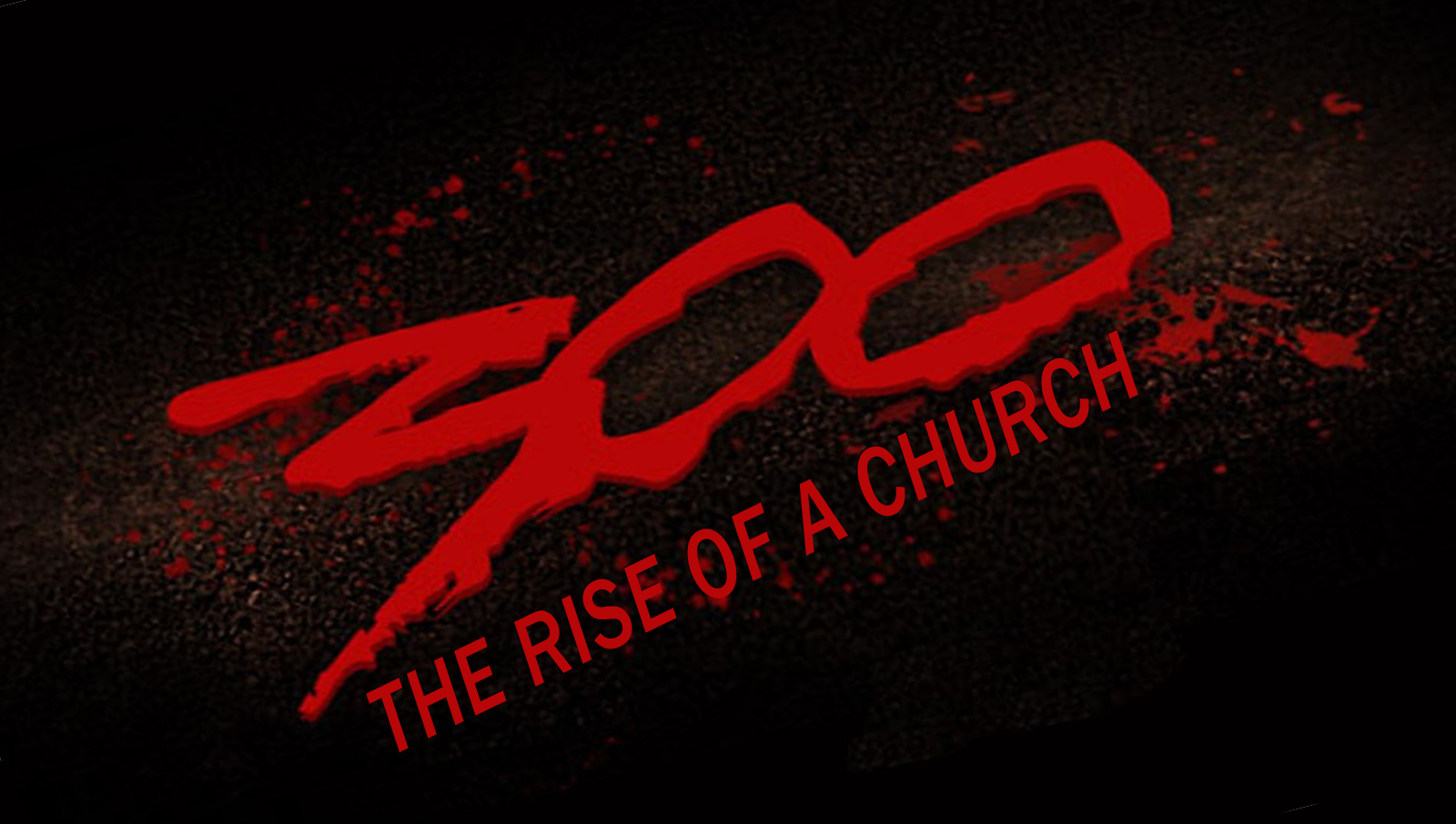
God’s way out is not yucky nor mucky. When crossing the Red Sea, the Israelites’ rain boots didn’t get stuck in the muck. They walked on DRY land. Believe for the DRY path.

« Previous Page — Next Page »
































